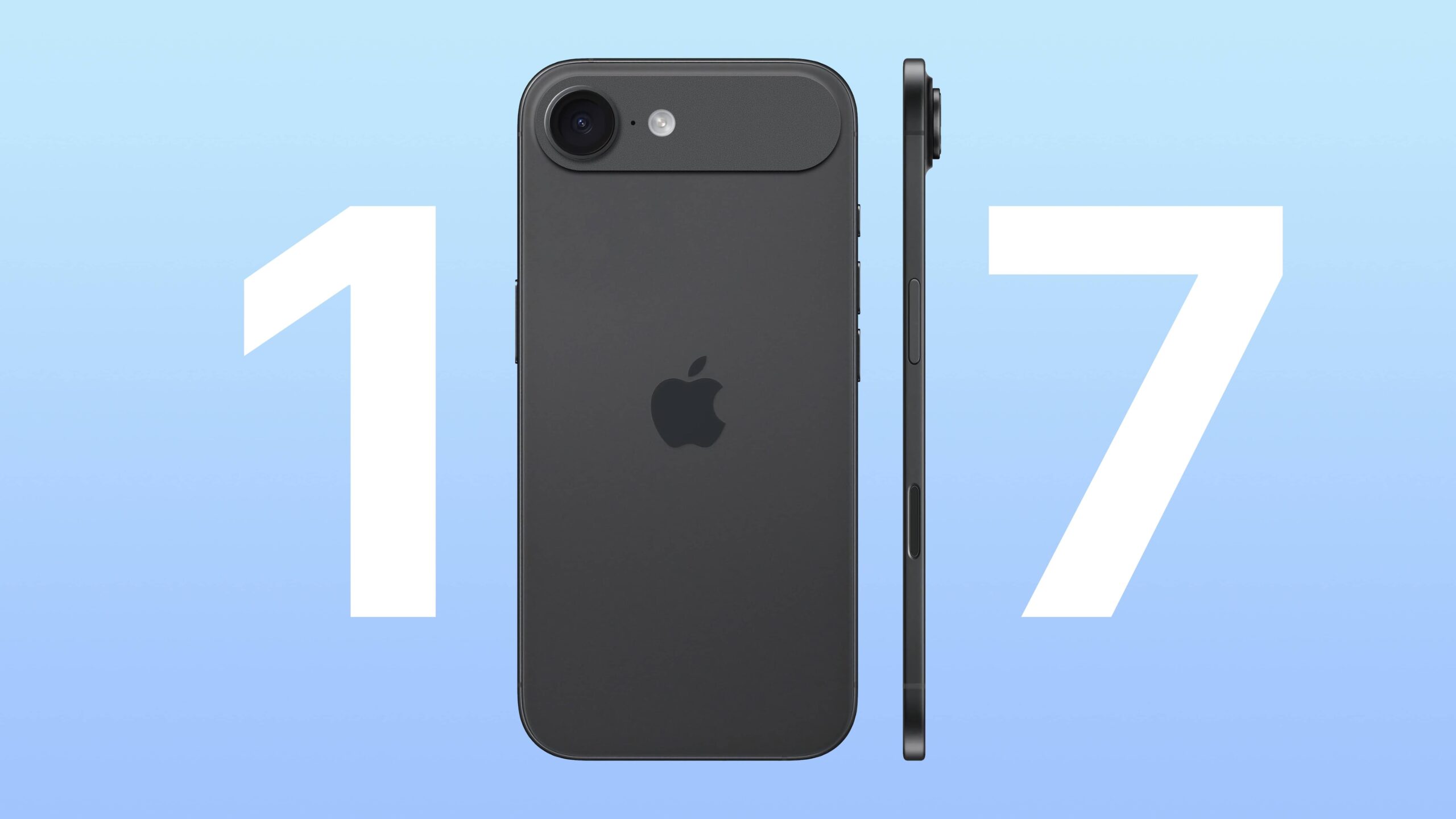The iPhone 17 Air reflects Apple’s enduring focus on lightness, style, and wireless freedom—principles that have defined the “Air” brand since the MacBook Air’s debut in 2008. But at a time when consumers are keeping phones for 3-4 years and questioning incremental upgrades, Apple seems to be doubling down on exactly the kind of cosmetic change that’s driving user fatigue.
“Apple hasn’t changed the iPhone much in years” is becoming the dominant narrative around iPhone releases. Let’s see if the iPhone 17 Air breaks that pattern.
What we know about the iPhone 17 Air so far
As the thinnest iPhone ever, there are plenty of reasons to be excited and also some things to be worried about. Here are the biggest iPhone 17 Air rumours so far.
It will launch with a 5.5-6mm profile
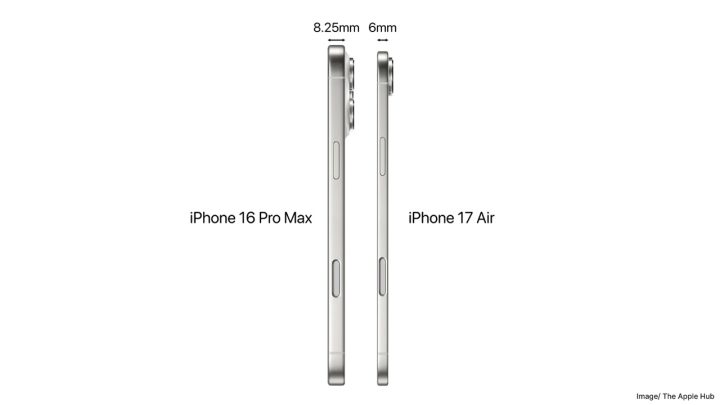
The iPhone 17 Air is shaping up to be Apple’s most design-focused iPhone in years. Leaked schematics suggest a record-thin profile of around 5.5-6mm, potentially making it Apple’s slimmest phone ever. Reports point to a titanium-aluminium alloy frame and a distinctive single-lens camera bar spanning the back with a noticeable bump.
Making phones super-thin isn’t just a design choice that forces compromises at every level. When Apple shaves millimetres from the iPhone 17 Air’s profile, they’re fundamentally altering what the device can do. The device will also feature a 6.6-inch OLED display with 120Hz ProMotion.
Air 17 might launch with A19 chipset
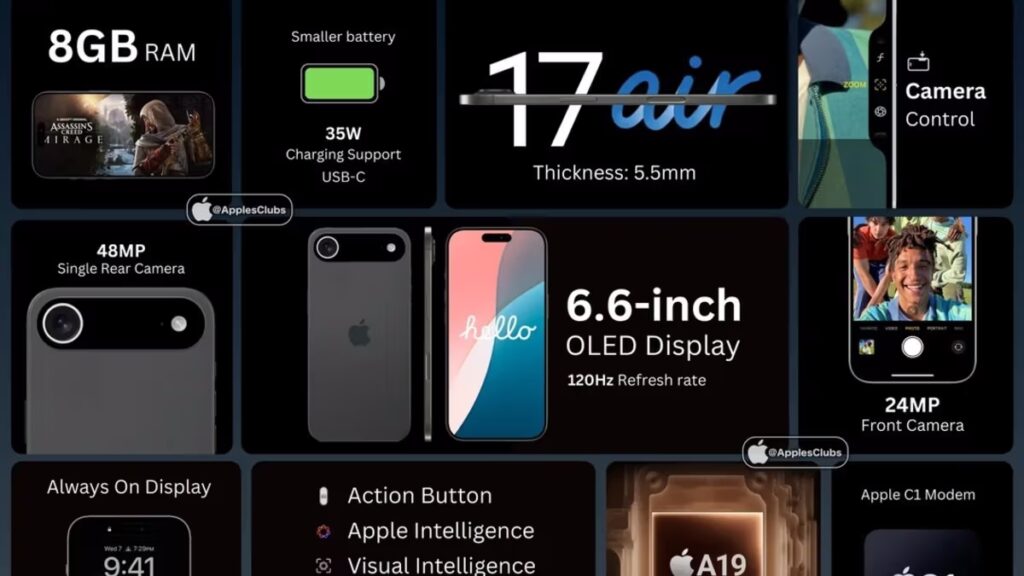
Powered by Apple’s next-generation A19 chip built on TSMC’s advanced 3nm N3P manufacturing process. This upgrade promises better performance through higher transistor density, improved power efficiency of up to 30% less consumption, and significantly enhanced on-device AI capabilities thanks to a stronger Neural Engine.
The device is expected to come with 8-12GB of RAM, and despite positioning between the standard and Pro models, it inherits many flagship features, suggesting Apple is mainstreaming premium specs to appeal to a broader audience.
A shorter battery life?
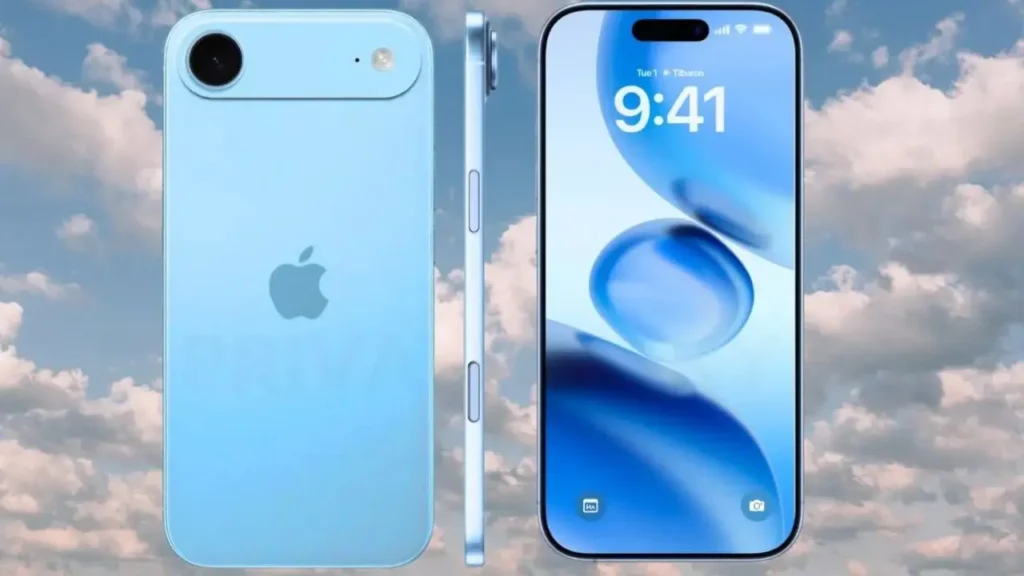
The most immediate concern is battery capacity. Current lithium-ion technology has hard physical limits—you can’t make a battery thinner without reducing its energy density proportionally. The ultra-thin design reportedly accommodates a smaller battery around 2,800mAh, a significant reduction that has consumers worried.
Early reactions capture this anxiety perfectly: “More worried about battery than looks” reflects the practical concerns many users have. Apple seems prepared to offset this limitation with AI-driven power management through iOS 19’s rumored Adaptive Power Mode and advanced silicon-carbon battery technology, but whether software optimization can fully compensate for reduced capacity remains to be seen.
The enhanced Neural Engine in the A19 chip is designed to enable smarter power management features, potentially helping offset battery size reductions. However, this approach relies heavily on AI efficiency rather than raw battery capacity—a strategy that could prove risky if the software optimisations don’t deliver as promised.
Going completely wireless
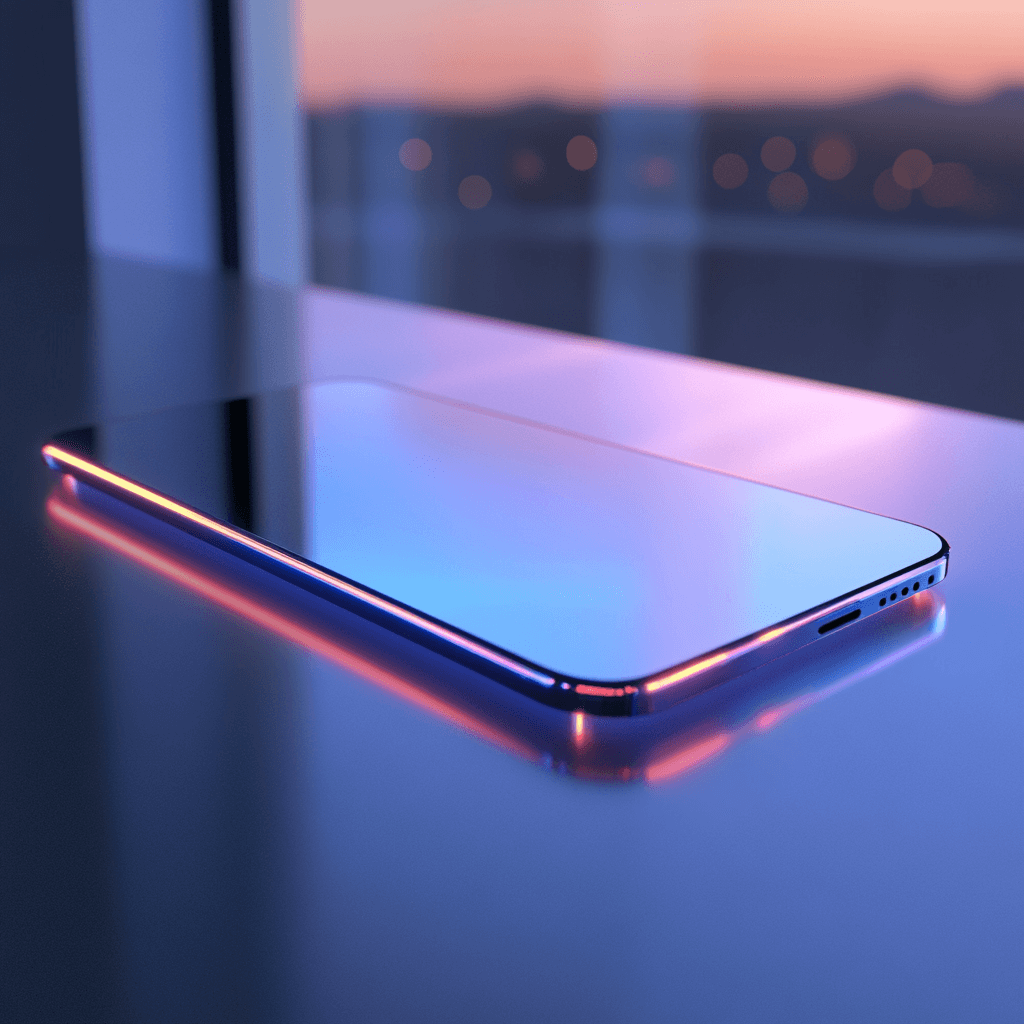
Adding to the design challenges, there’s speculation that the iPhone 17 Air might embrace a completely port-less design, relying entirely on MagSafe and wireless charging. This would align with Apple’s broader push toward wireless ecosystems while creating more space for internal components in the slim profile.
The iPhone 17 Air is anticipated as Apple’s first truly portless smartphone, designed to function solely with Qi2-certified MagSafe wireless charging and cloud-based data syncing. This bold step aligns with Apple’s vision for cable-free mobile devices, a move now fully permissible under EU law. Commission spokesperson Federica Miccoli confirmed, “If a phone does not offer wired charging, then it is not required to have a USB-C port,” clearing a key regulatory hurdle.
While this creates more internal space for components, it also raises questions about charging speed and convenience, areas where many African users already express frustration with wireless charging limitations.
Is the 17 Air a gaming phone?
Beyond battery concerns, ultra-thin phones face thermal management issues. Thinner devices create smaller spaces for heat dissipation, which can lead to thermal throttling and reduced performance during intensive tasks like gaming, video recording, or AI processing—exactly the kinds of features Apple has been emphasising in recent iPhone generations.
Advanced cooling solutions like vapor chambers and graphene heat spreaders can help, but they add complexity and cost while still being constrained by the device’s slim profile. The structural integrity concerns aren’t unfounded either—thinner devices are inherently more susceptible to flexural stress, as the iPhone 6 Plus “Bendgate” controversy demonstrated.
Apple has learned from that experience, but the fundamental physics of thin materials under stress hasn’t changed. The company will likely need to use more expensive materials and engineering solutions to maintain durability, potentially driving up costs without delivering features users actually want.
The phone is targeting high-end shoppers at over $700
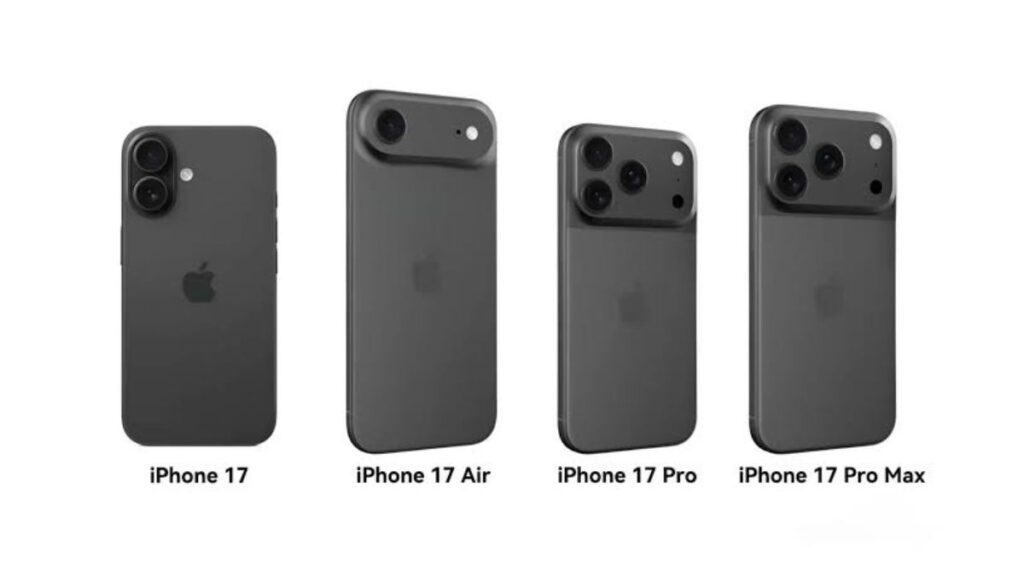
Speaking of costs, the iPhone 17 Air’s pricing remains unconfirmed but speculation places it between $899 and $999. This would position it as a replacement for the Plus series, establishing a new middle tier for users seeking premium design without full Pro specifications.
However, pricing concerns are already surfacing. Early reactions like “Not if it’s $900” and “Price hikes, yet barely any change” reflect deep skepticism about value proposition. If Apple prices it as a premium device to offset engineering costs, it risks alienating users who are already questioning iPhone value. Alternatively, positioning it as mid-tier could cannibalize sales from other iPhone models.
The competitive landscape adds another layer of complexity. Comments like “I’d jump ship to a Pixel if the price is crazy” suggest that Android alternatives are gaining mindshare among iPhone users—this isn’t the locked-in ecosystem Apple once enjoyed.
Is it worth upgrading?
The disconnect between Apple’s design focus and consumer behaviour is particularly striking. User sentiment reveals a clear pattern: people are actively resisting the upgrade cycle and questioning the value proposition of new iPhones.
Comments like “Still rocking my iPhone 11,” “No reason to upgrade every year,” and “Phones last too long for this incremental stuff” represent a fundamental shift in consumer behavior. Users are keeping phones longer not because they can’t afford upgrades, but because they don’t see compelling reasons to change.
This presents a challenge for the iPhone 17 Air. If consumers are already sceptical of cosmetic changes, launching a phone that’s primarily differentiated by its thinness—potentially at the expense of battery life and durability—seems to miss what users are actually asking for. The rumoured camera bar design is already receiving mixed reactions, with comments like “Can’t believe Apple put a bump on a bar” and “It looks bent already” suggesting that even Apple’s design leadership may not overcome practical concerns.
Does the Air brand strategy make sense here?
Apple’s “Air” branding has always implied lightness and removing constraints. The MacBook Air made laptops ultra-portable, AirPods eliminated tangled cables, and AirTag simplified tracking. But those products succeeded because they solved real problems.
The iPhone 17 Air leans into the same philosophy by shaving off thickness, yet it’s unclear what real-world issue this addresses. Unlike the MacBook Air, which tackled portability, or AirPods, which freed us from wires, the iPhone 17 Air’s main benefit seems mostly aesthetic at a time when users care more about better battery life and durable hardware.
That’s a pattern Apple’s seen before. The iPhone Mini also prioritised a design ideal — compactness — over features that mainstream buyers actually wanted, like a larger screen and longer battery life. Its lukewarm sales proved that niche preferences don’t always translate to broad appeal. Early reactions to the iPhone 17 Air feel similar. Comments like “Love that Air design!” exist, but they come mostly from a small group of dedicated fans. The larger audience is more cautious, questioning whether extreme thinness will come at the cost of practical usability.
The bigger picture
The iPhone 17 Air says a lot about where Apple is headed. Early iPhones like the iPhone 4 and iPhone X took bold risks that paid off because they gave people something they didn’t know they needed. Today, though, most people hang on to their phones longer and care more about battery life and durability than small design tweaks.
That’s what makes the iPhone 17 Air feel like a real test. Apple can obviously make a super-thin phone, but they’ll need to convince buyers that it’s a better phone, not just a thinner one. If they can solve the engineering challenges without giving up things like battery life and strength, it could be a genuine breakthrough. If they can’t, it may end up as another product that looks good but doesn’t quite fit what people actually want.
More than anything, this launch will show whether Apple’s design-first mindset still matches what customers care about. The answer could shape the future of the iPhone for years to come.
The iPhone 17 Air is expected to launch alongside the iPhone 17 series in September 2025. Pricing and final specifications remain unconfirmed.
Get passive updates on African tech & startups
View and choose the stories to interact with on our WhatsApp Channel
Explore
